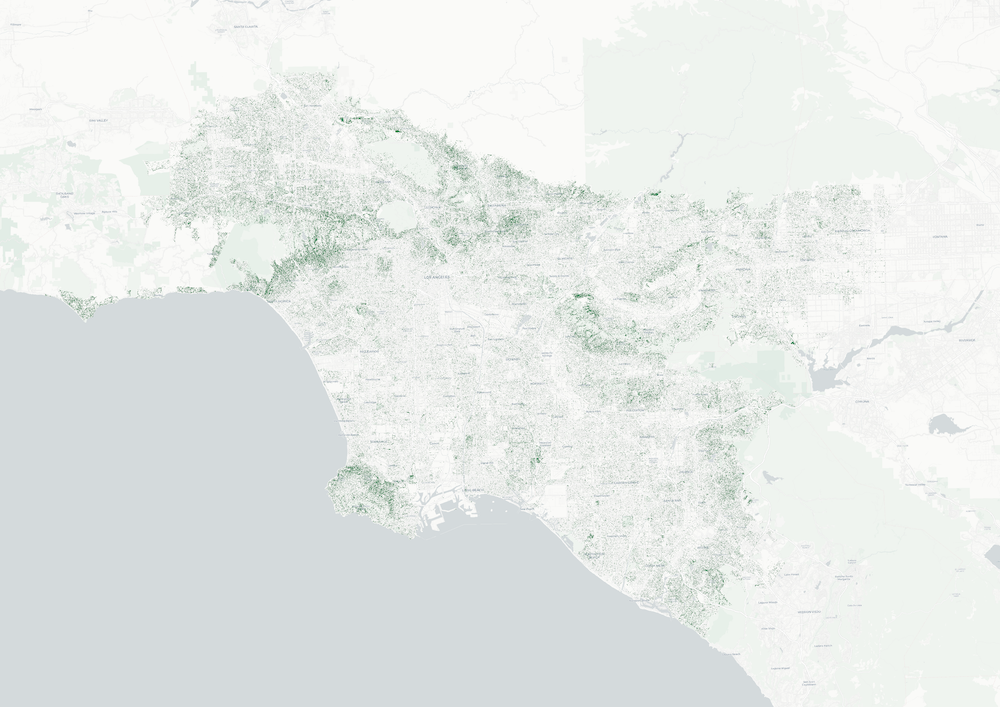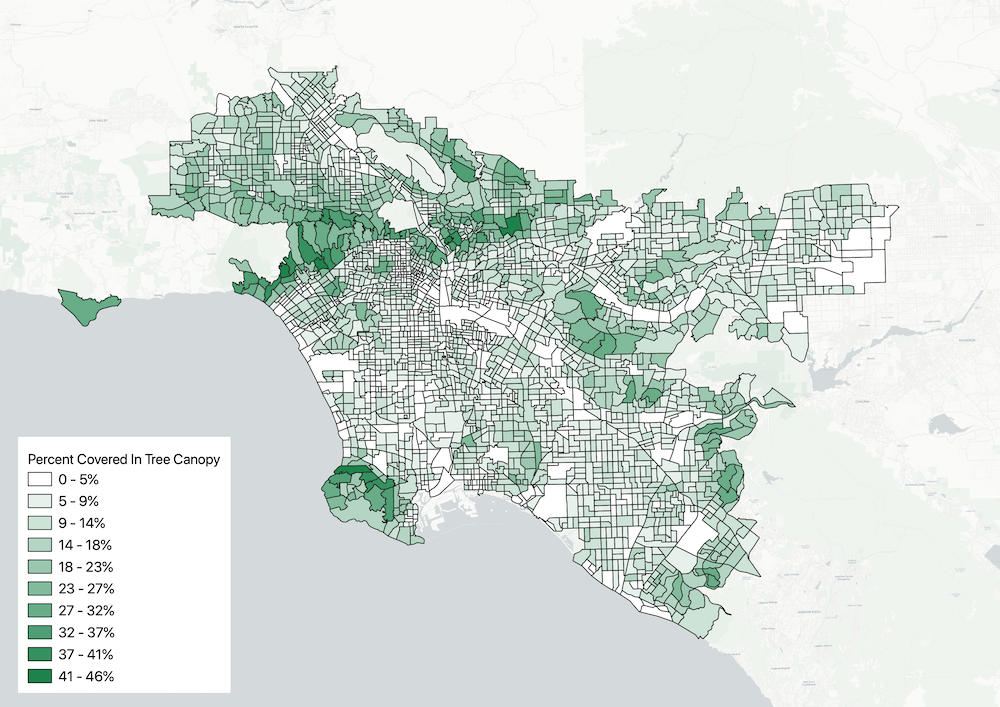Money Trees is the Perfect Place for Shade
Mapping access to shade across Greater Los Angeles
Mapping access to shade across Greater Los Angeles
Jeffrey Shen
Apr 1, 2020
Los Angeles is famous for its sunny and warm weather, yet too much sunshine is a growing issue, as global climate change is bringing more and more days of extreme heat to the city. This problem is exacerbated by the lack of trees in L.A., which provide shade, improve air quality, and make public spaces more pleasant.
Trees, however, are not equitably distributed throughout L.A. Beverly Hills Boulevard, for example, is lined with many mature trees that provide a lot of shade. In contrast, in many poorer neighborhoods, trees were actually cut down as part of “tough on crime” enforcement policies, because the city believed that dense tree canopies could promote crime and be used to stash drugs and guns.
So, just how unequally are trees distributed throughout Los Angeles? I decided to quantify the issue, using GIS and satellite imagery of L.A.



As can be seen, trees—and the shade, improved air quality, and aesthetic benefits they bring—are inequitably distributed throughout Los Angeles, with wealthy neighborhoods having, on average, more tree coverage than low or middle income neighborhoods. It is important that all L.A. residents have equal access to the benefits of ample tree coverage, in order to help mitigate climate change’s effects and bring about environmental justice in the city.